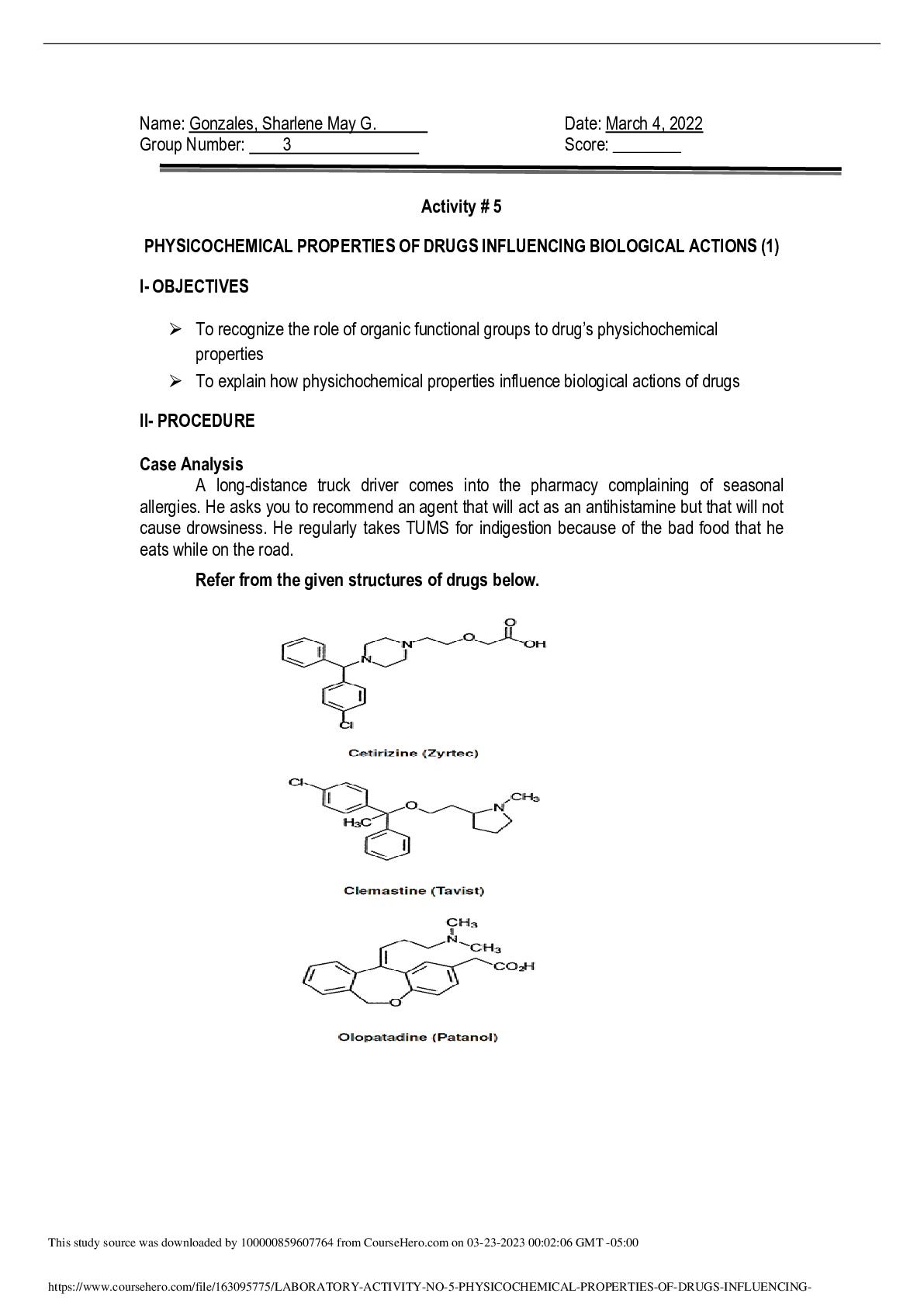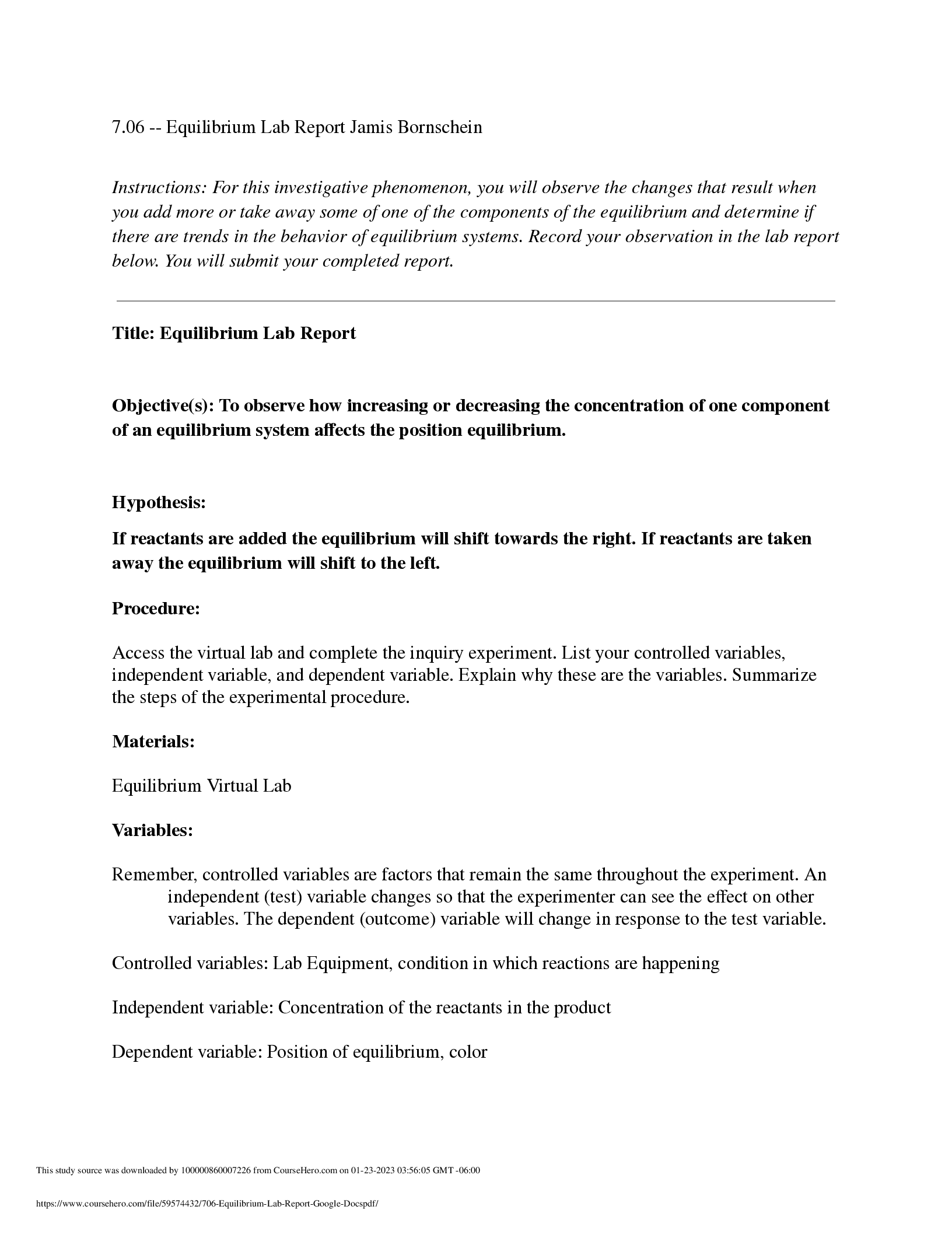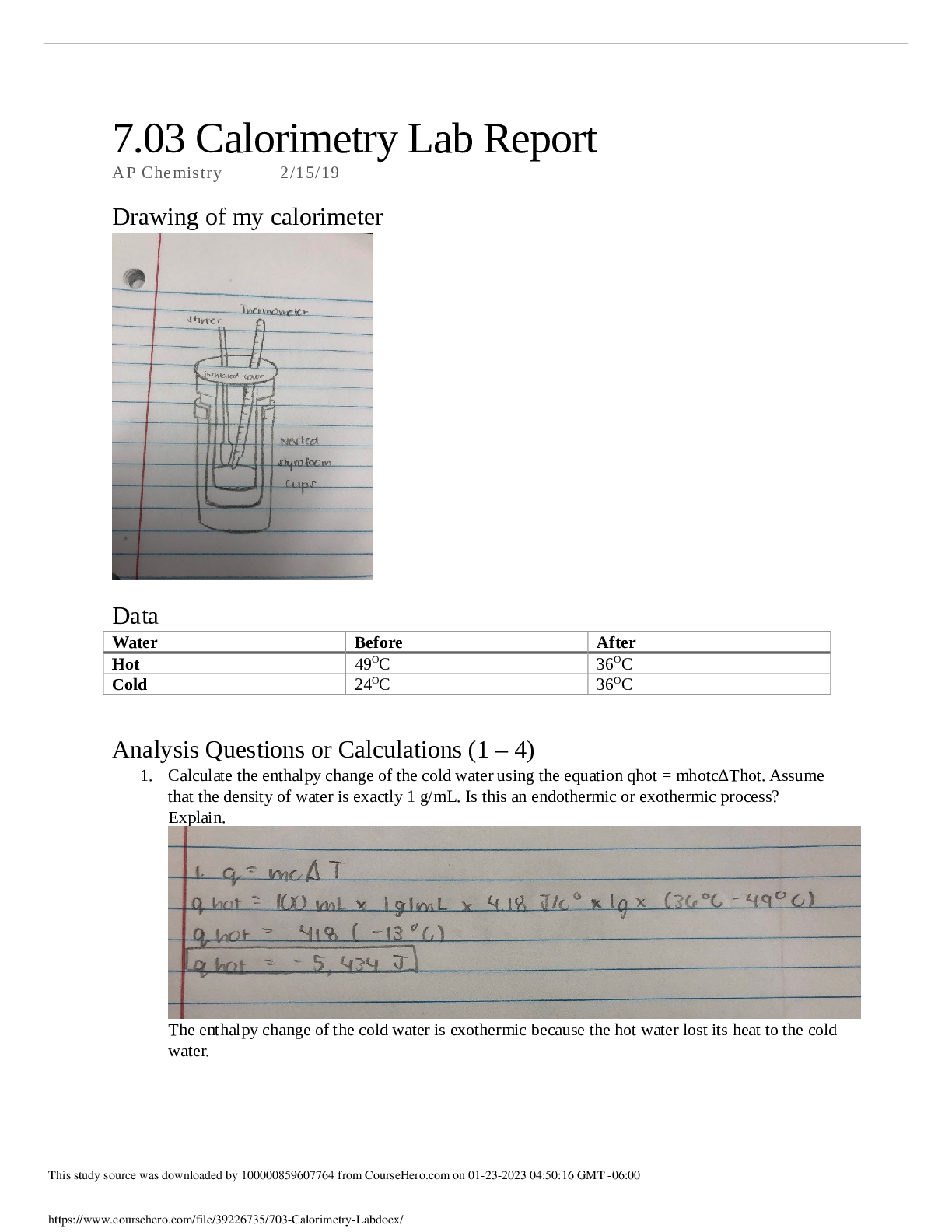Biology > Lab Report > Rasmussen College, Ocala - BIO 202L Lab 14 The Urinary System. Experiment 1: Kidney Filtration, Expe (All)
Rasmussen College, Ocala - BIO 202L Lab 14 The Urinary System. Experiment 1: Kidney Filtration, Experiment 2: Urinalysis, Experiment 3: Virtual Model – Urinary System Coloring Activity, Experiment 4: Fetal Pig Dissection of the Urinary System. Post Lab Questions and Answers
Document Content and Description Below
Lab 14 The Urinary System BIO202L Access Code (located on the lid of your lab kit): AC-4TLVN1P Experiment 1: Kidney Filtration Table 1: Solutions Present in Each Container Before 60 Minute Submer... sion Solution Dialysis Tubing Beaker Congo Red Mixed with yellow food coloring inside dialysis tubing, making a green color Water only Yellow Food Coloring Post-Lab Questions ”1. What specific part of the kidney does the dialysis tubing represent? What is this part’s function?” ”2. What does the yellow food coloring represent at the end of the experiment? What does the Congo Red represent? ” ”3. Why is it important that the kidney filters the blood? ” Experiment 2: Urinalysis Table 4: Simulated Urine pH Test Lab 14 The Urinary System BIO202L Simulated Urine Sample pH A pH 8 B pH 4 C pH 9 D pH 6 Table 6: Simulated Urine Protein Test Simulated Urine Sample Color Before Biuret Solution Color After Biuret Solution A clear purple B clear blue C clear purple D yellow blue Table 7: Simulated Urine Yeast Test Lab 14 The Urinary System BIO202L Post-Lab Questions ”1. Fill in Tables 9 through 12. Refer to Table 3 to determine if each result was normal or abnormal. If abnormal, include the data which indicates this (e.g., a pH of 3.2 means that glucose is present). Using the test results from each of the urine samples, diagnose the condition(s), if any, that each of the sample patients is experiencing. ” Table 9: Sample A Test Test Results pH Abnormal because the urine is at a more base level of 8 Glucose Normal the urine kept the same color. Protein Abnormal, the urine color turned to violet. Yeast Normal, the urine did not present bubbles. Diagnosis Kidney disease. Lab 14 The Urinary System BIO202L Diagnosis Diabetes Table 11: Sample C Test Test Results pH Abnormal, urine is alkaline Glucose Abnormal, urine turned redish green color Protein Abnormal, urine turned a violet color. Yeast Normal, no bubbles present. Diagnosis Kidney disease, and possible diabetes. ”2. If you were a doctor and a patient’s urinalysis came back with high level of glucose, ketones and an acidic pH, what diagnosis would you immediately look into? ” ”3. If you were a doctor and a patient’s urinalysis came back with an alkaline pH and high levels of protein, what diagnosis would you immediately look into? ” ”4. What other conditions can urine be used to test for? ” Experiment 3: Virtual Model – Urinary System Coloring Activity ”Insert image of Urinary System: Anterior View: ” Experiment 4: Fetal Pig Dissection of the Urinary System ”Insert photo of your pig’s dissected kidney with your name clearly visible in the background: ” [Show More]
Last updated: 1 year ago
Preview 1 out of 6 pages

Reviews( 0 )
Document information
Connected school, study & course
About the document
Uploaded On
Dec 15, 2020
Number of pages
6
Written in
Additional information
This document has been written for:
Uploaded
Dec 15, 2020
Downloads
0
Views
150

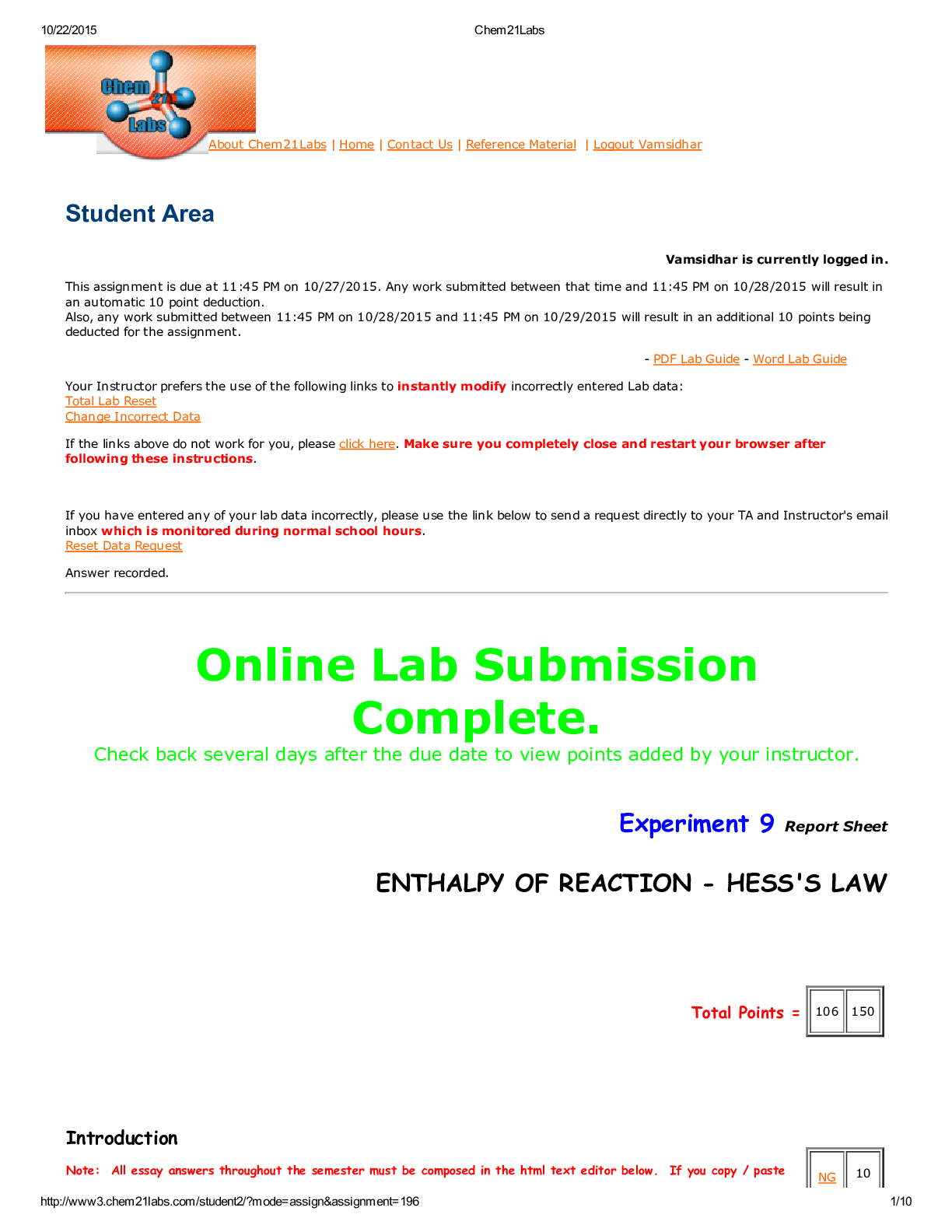
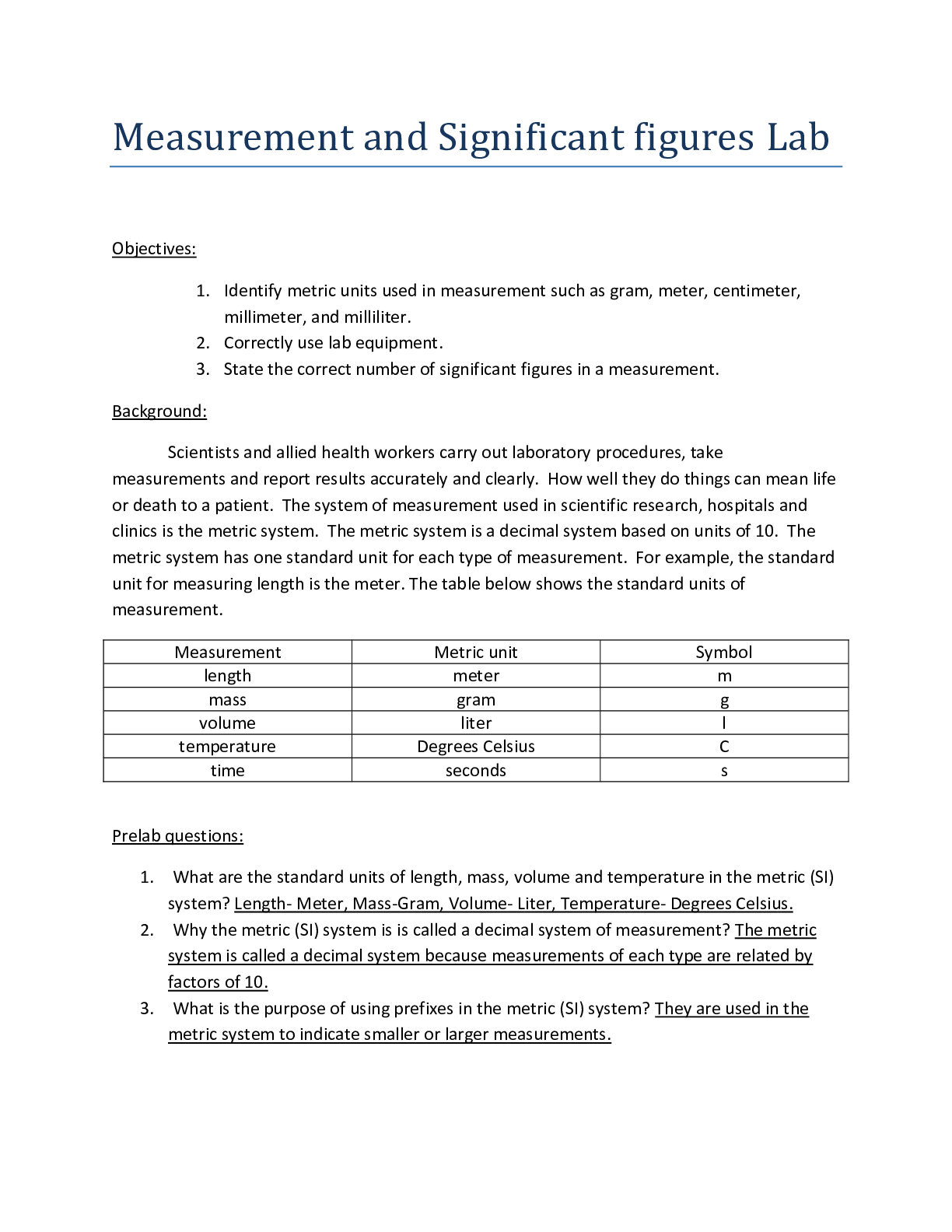

.png)
.png)
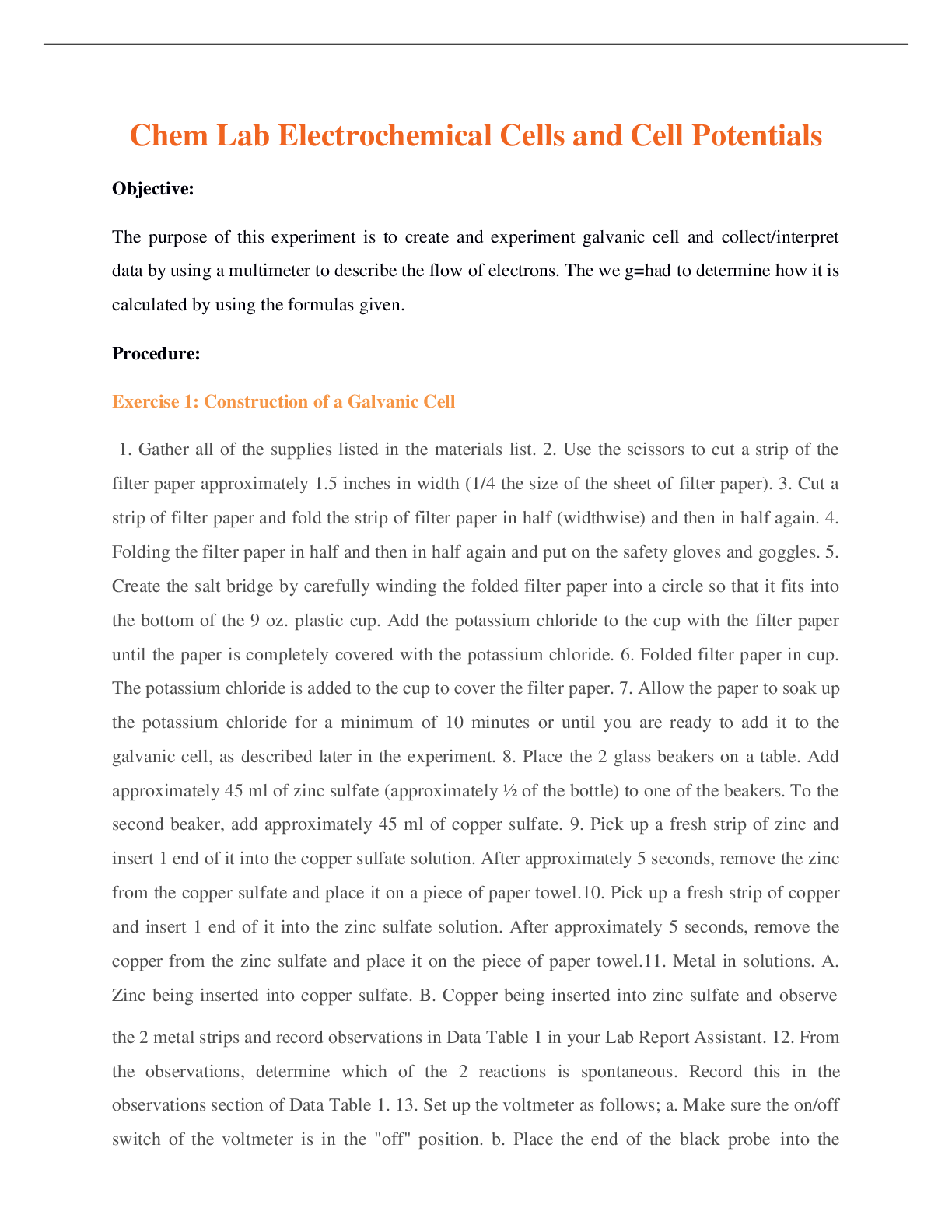
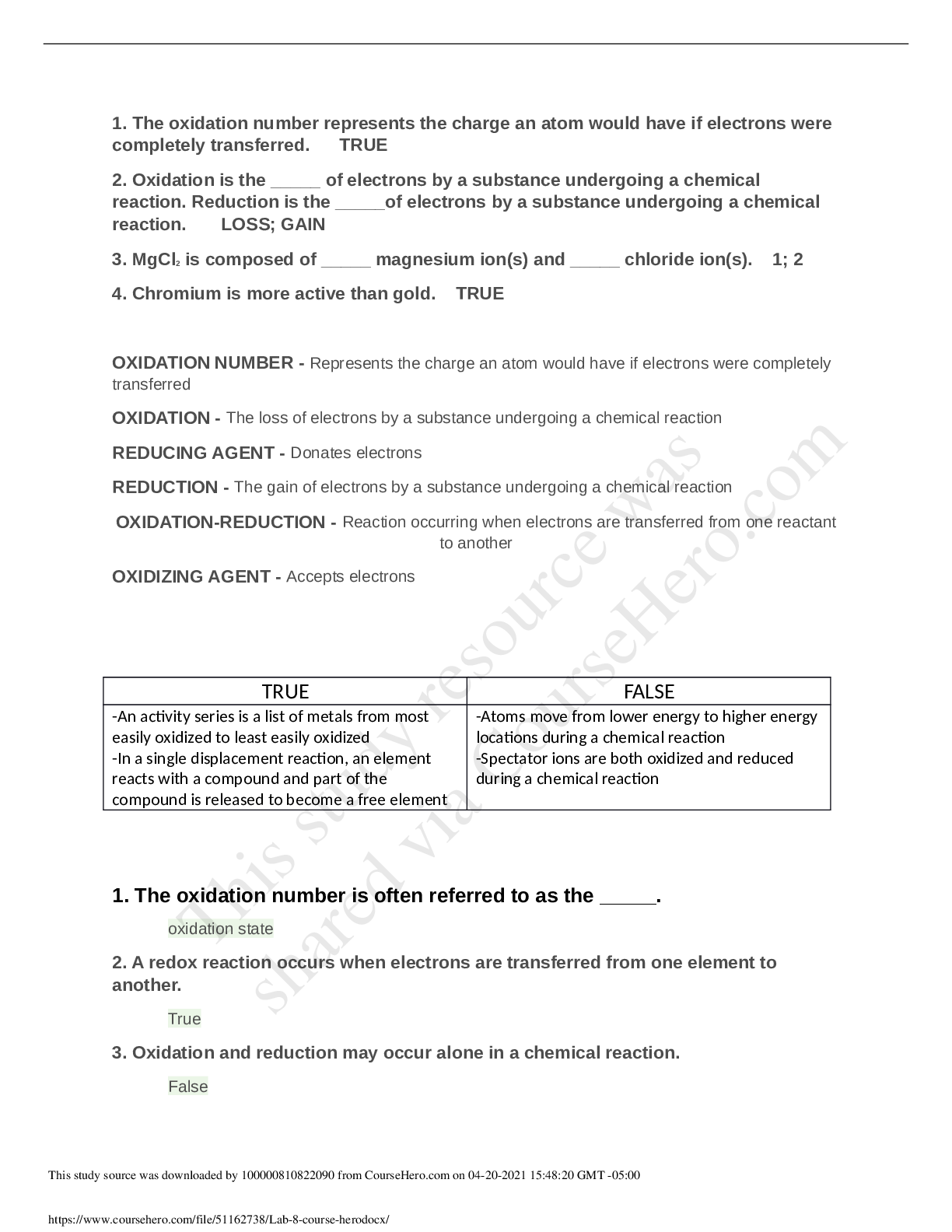


.png)



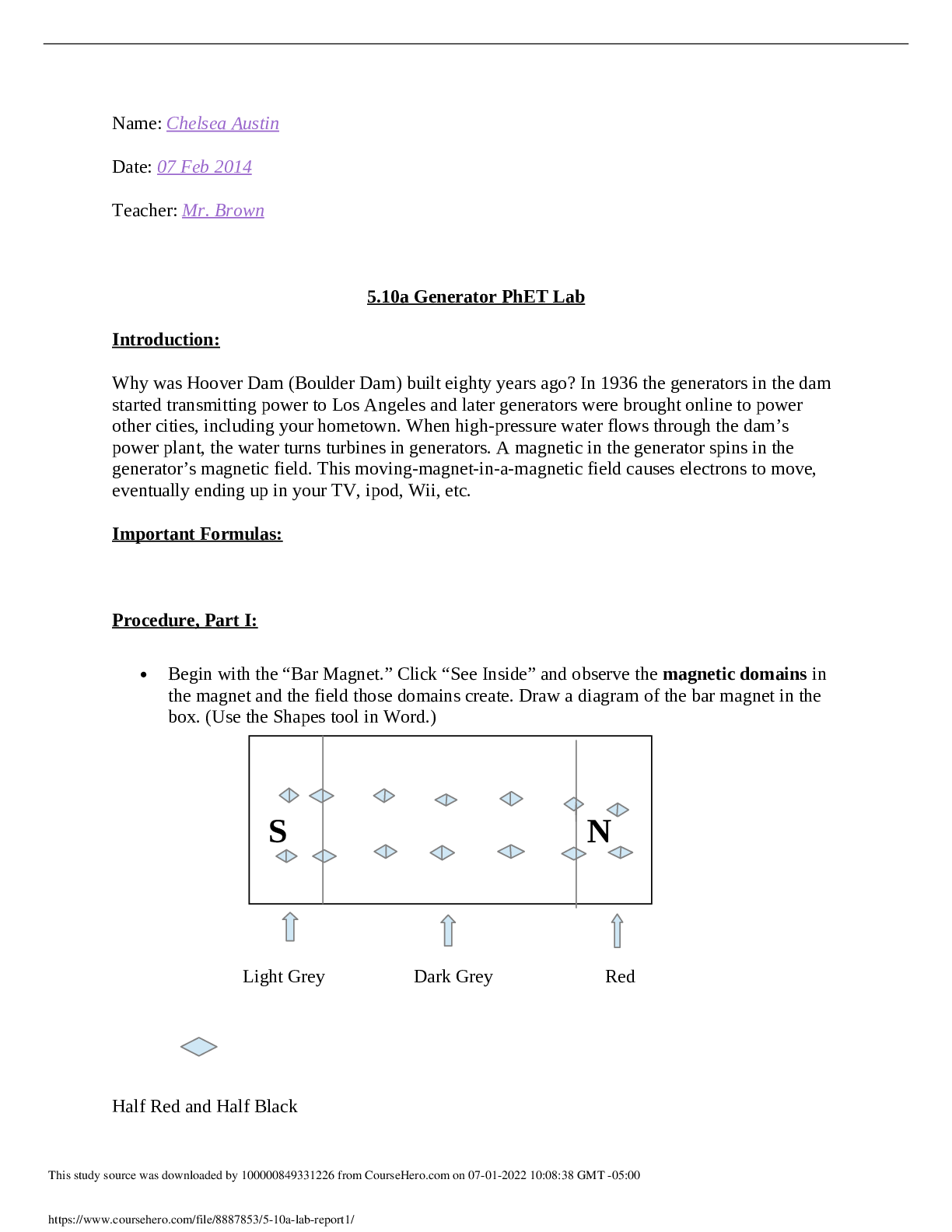
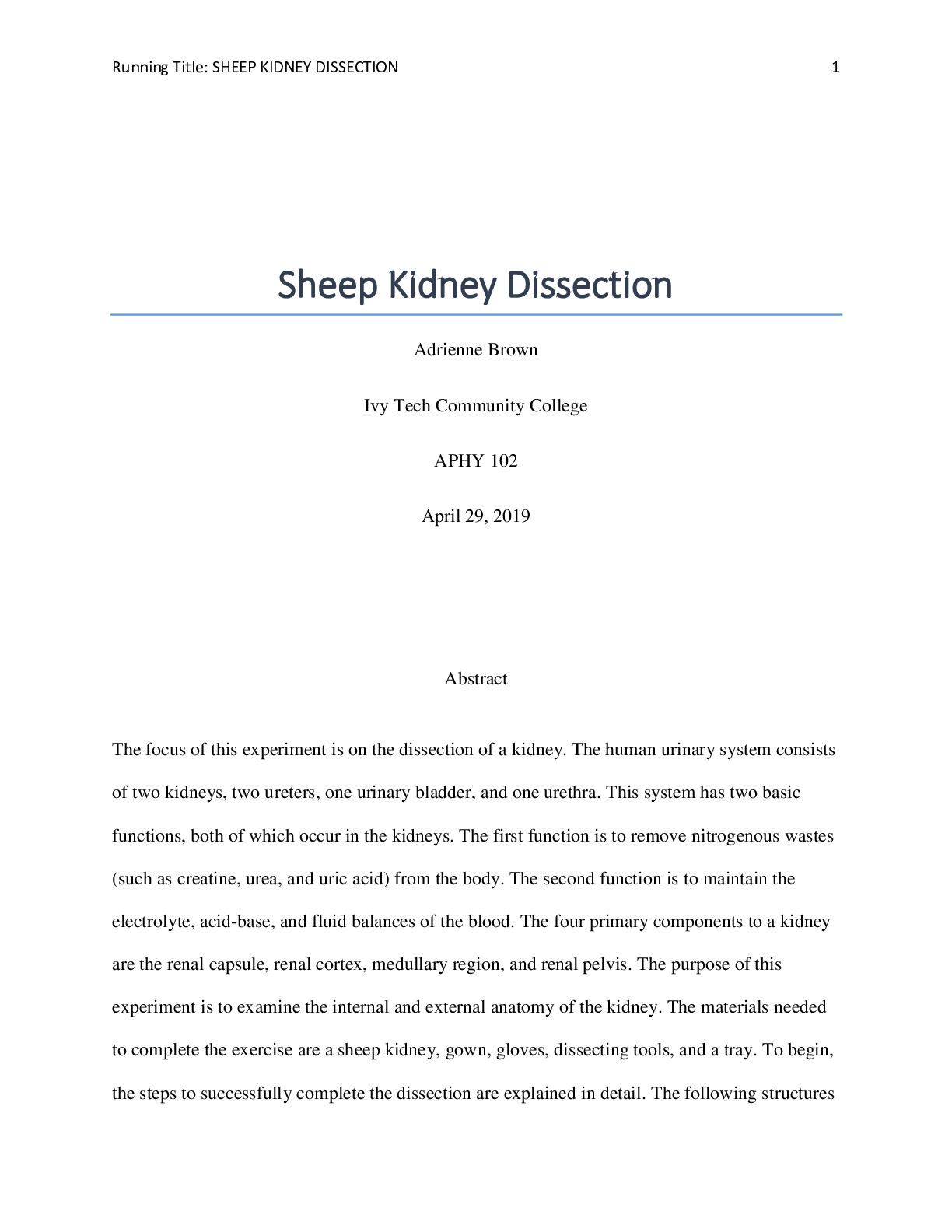
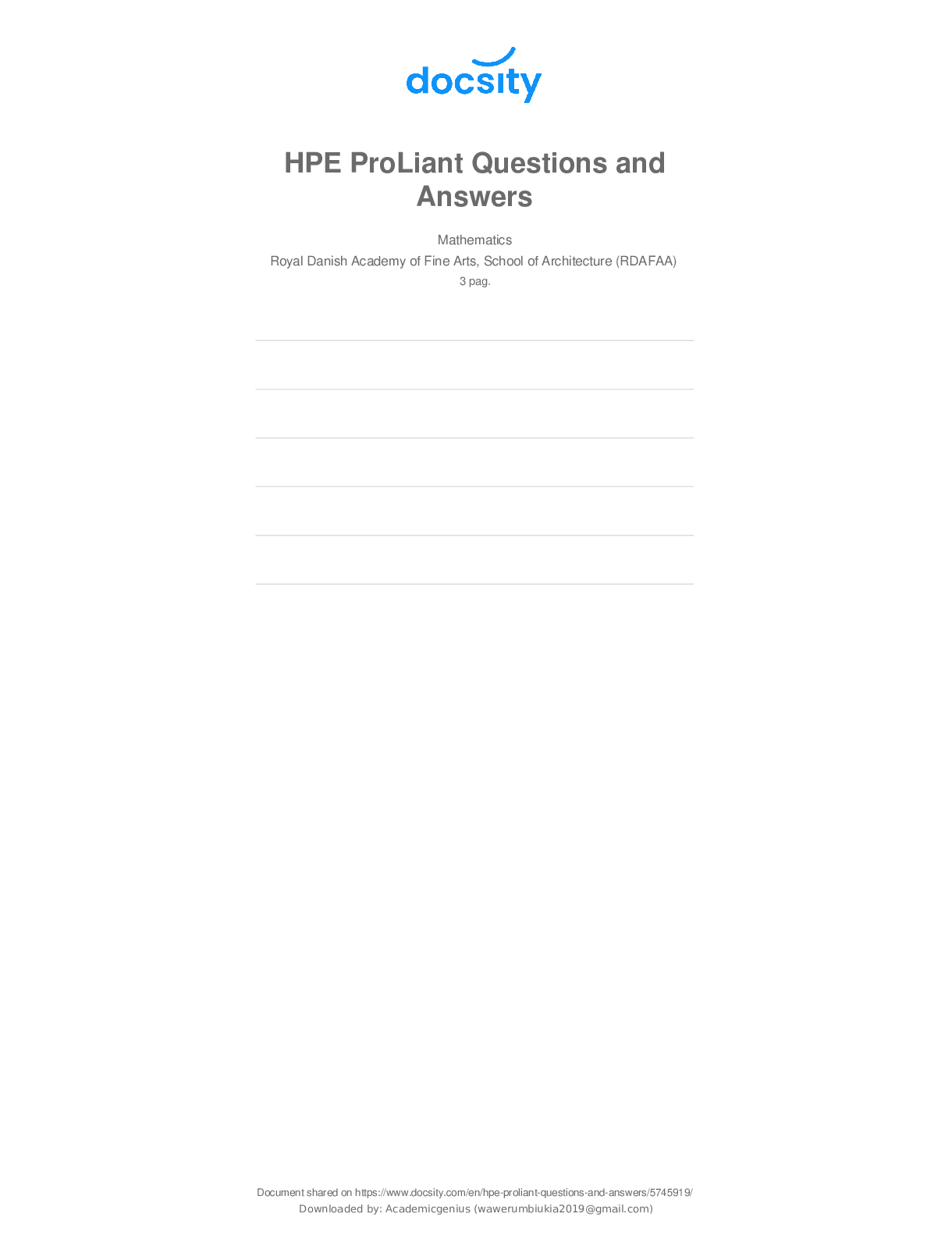
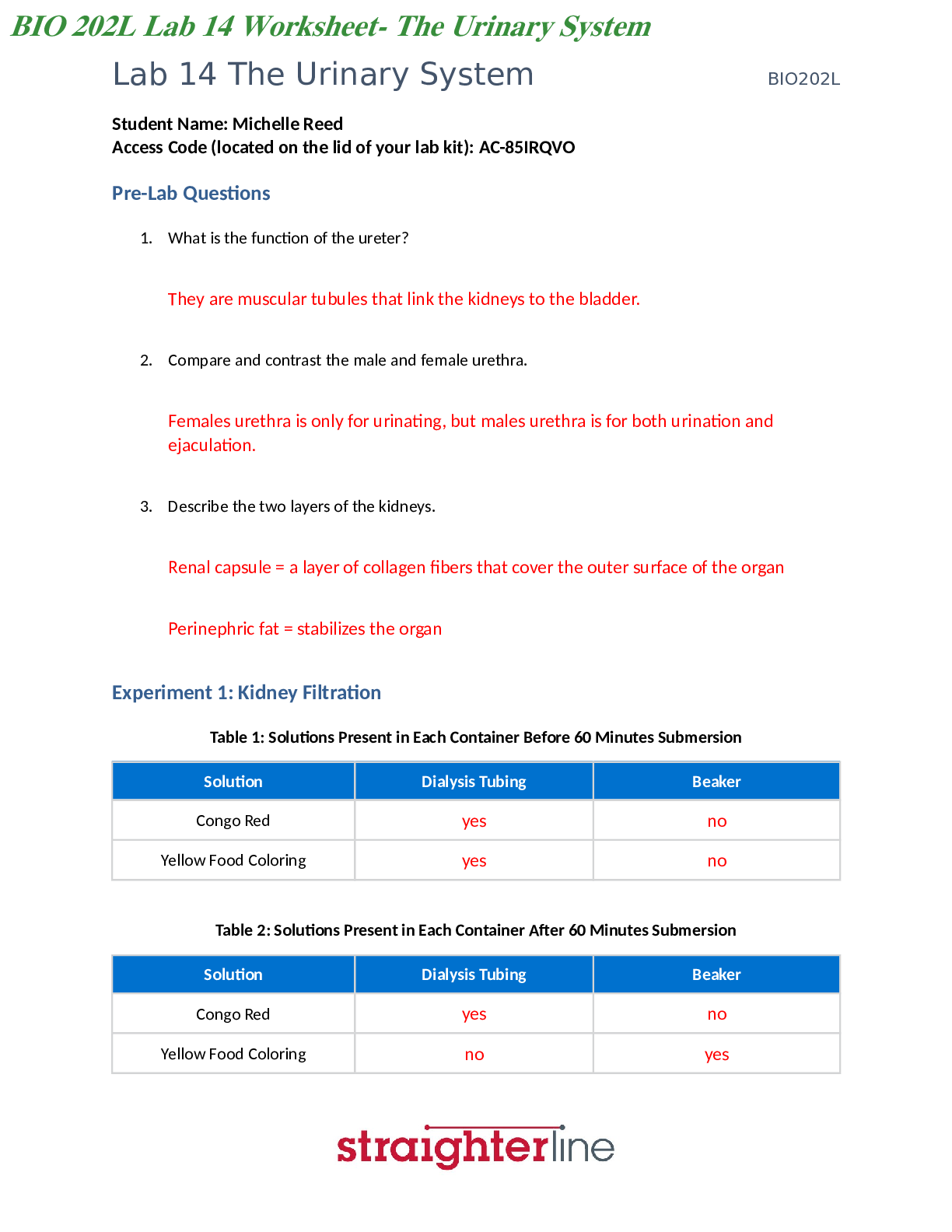
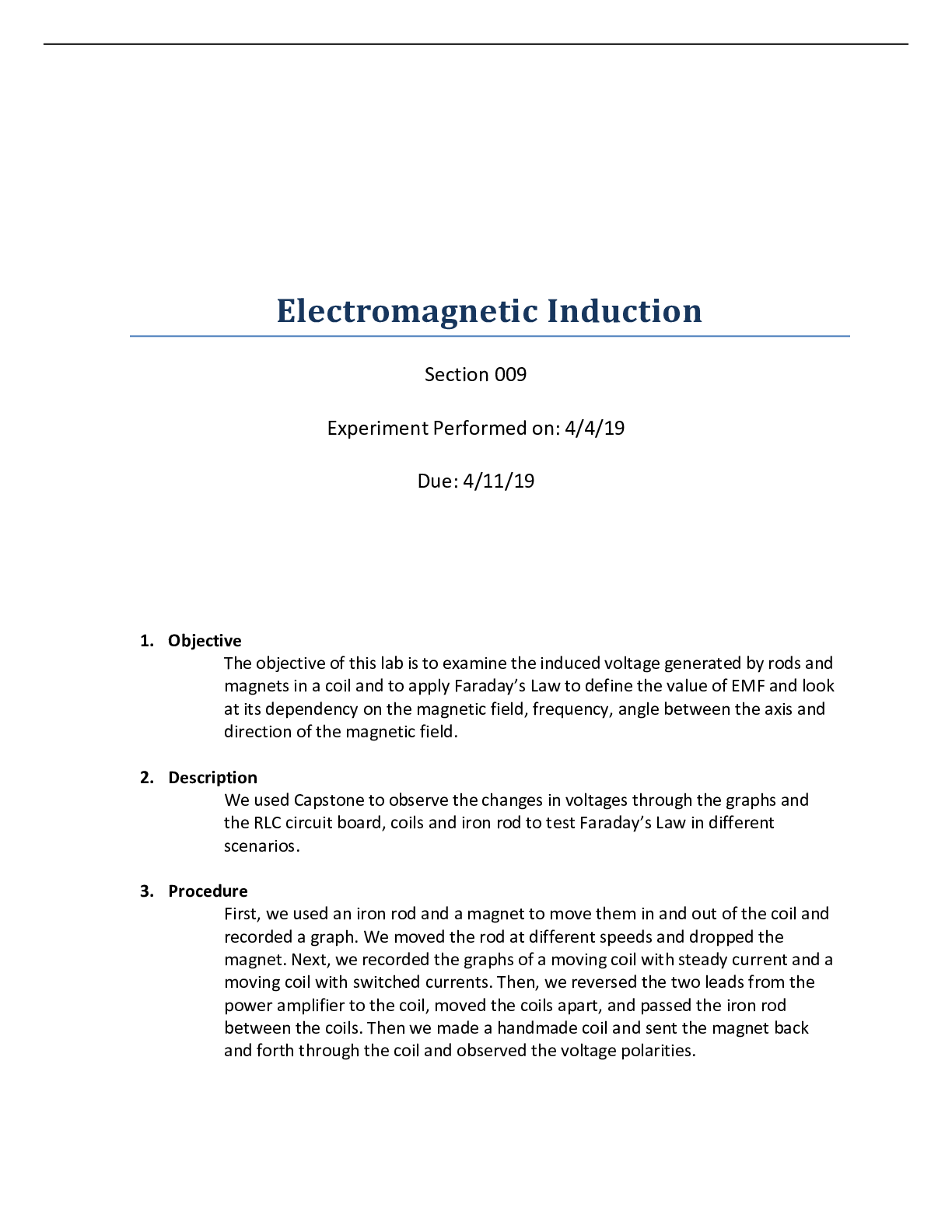



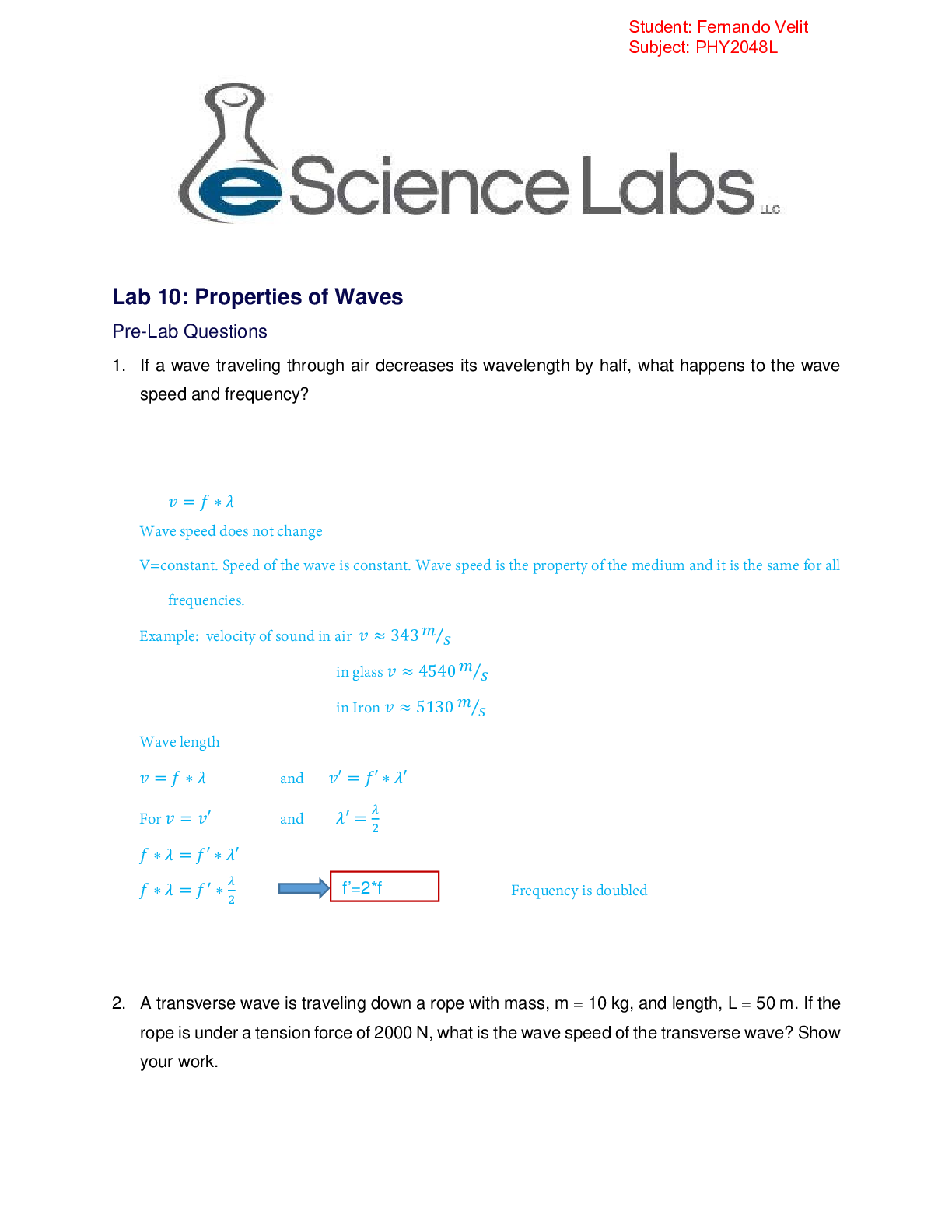
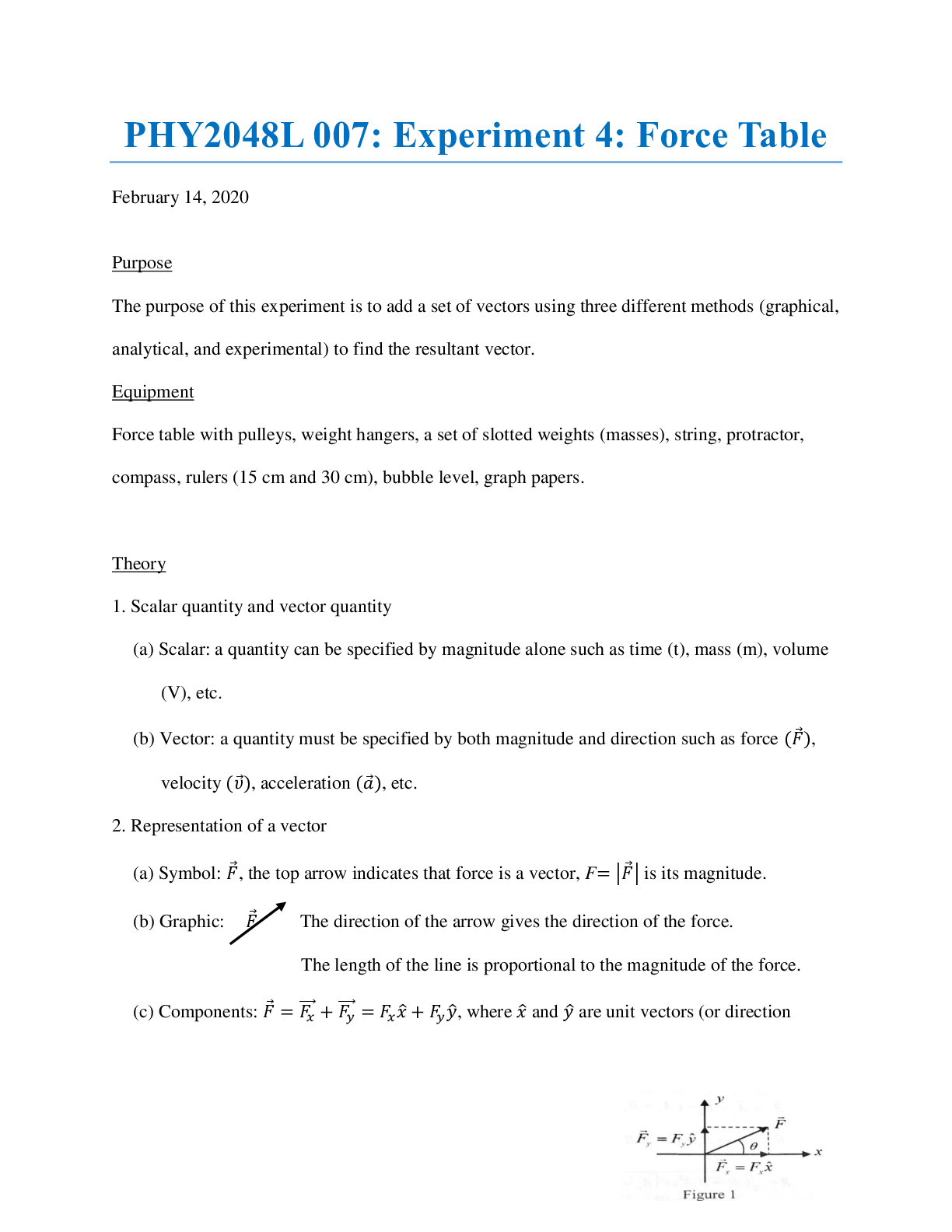
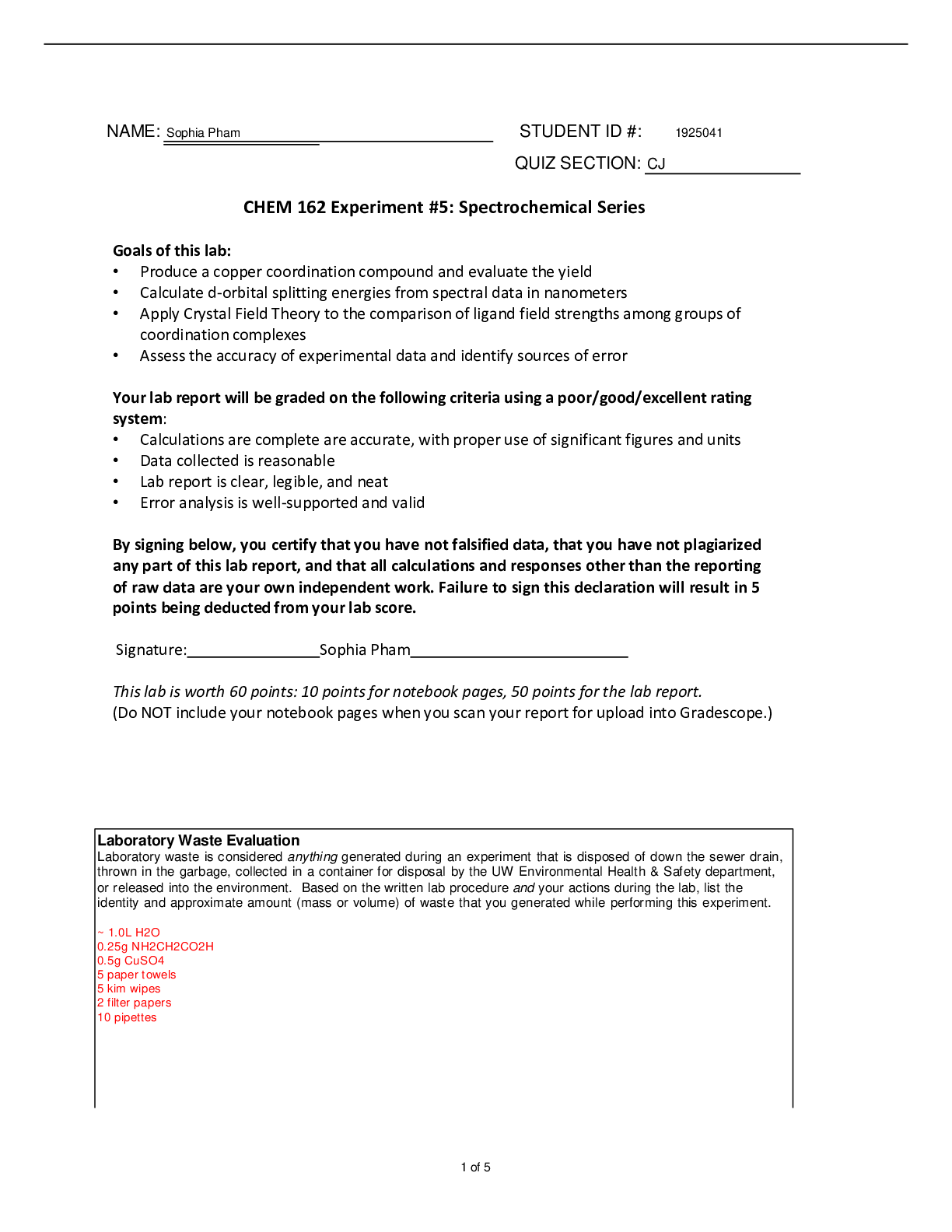
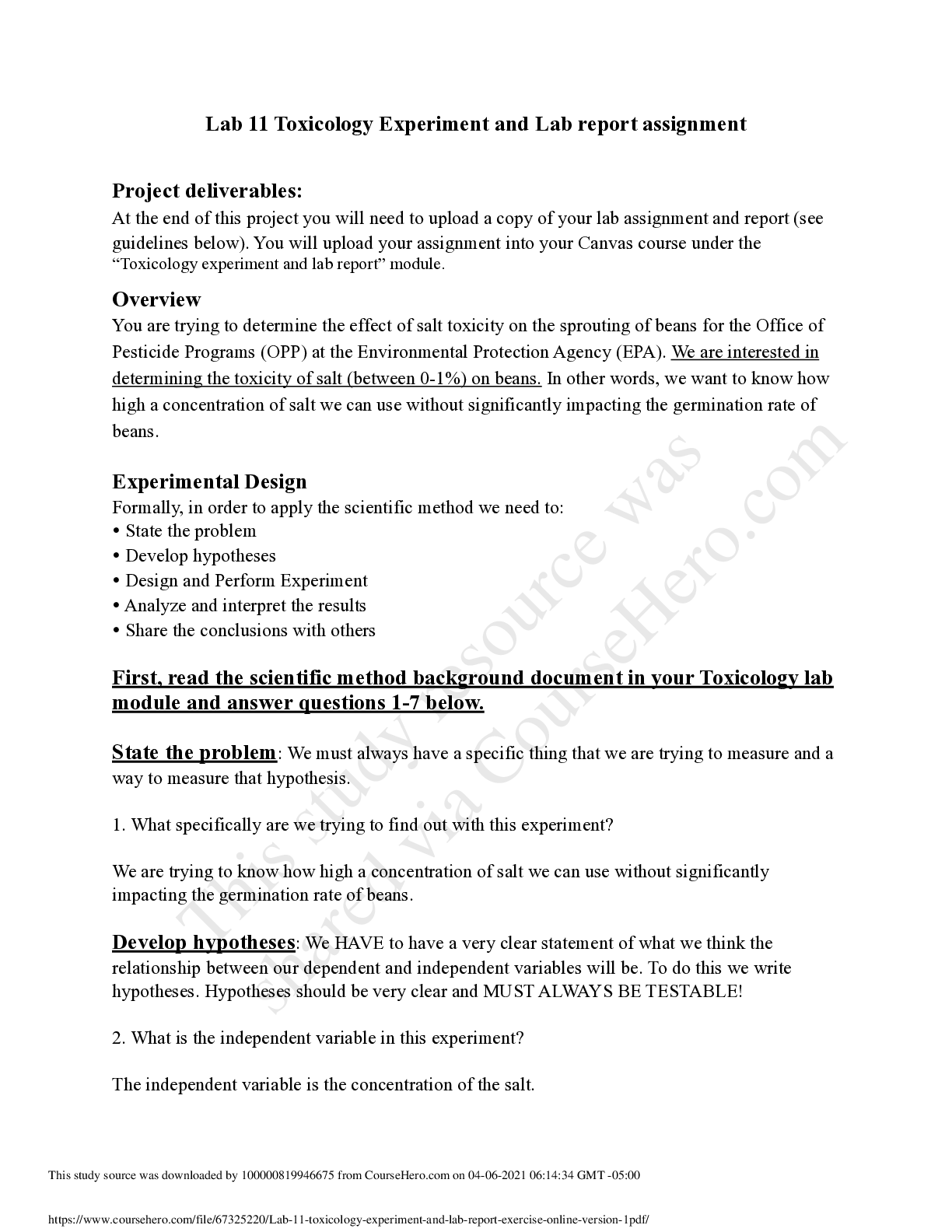
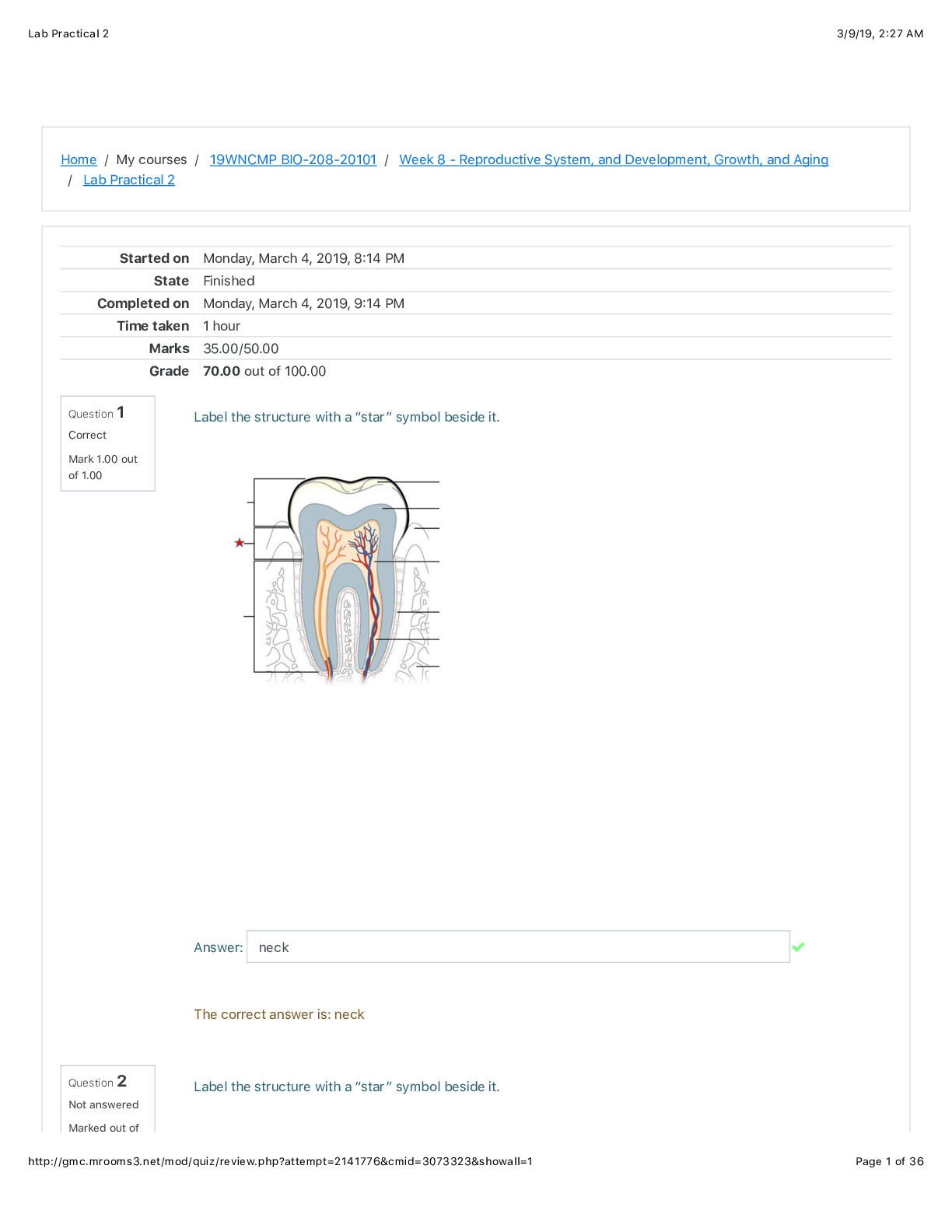
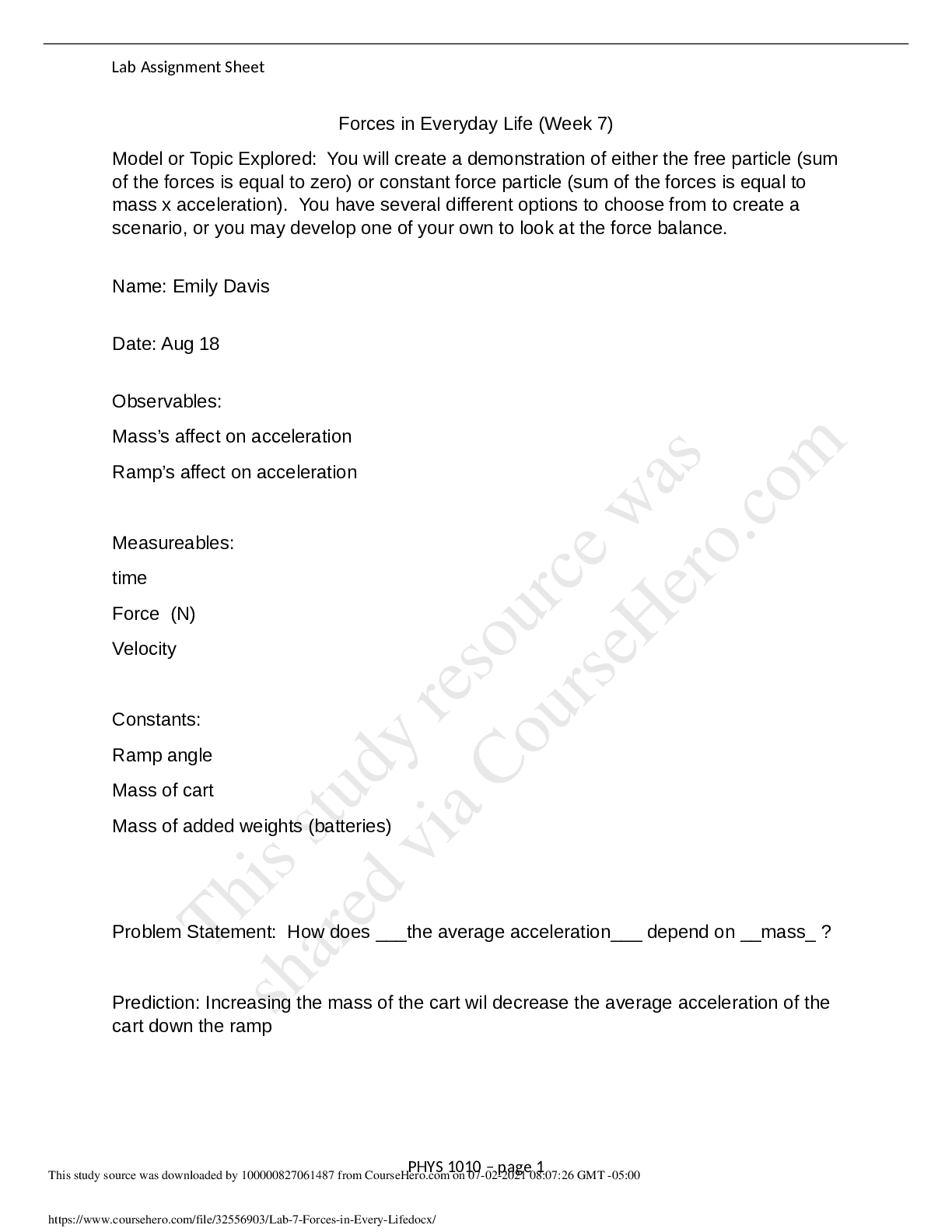
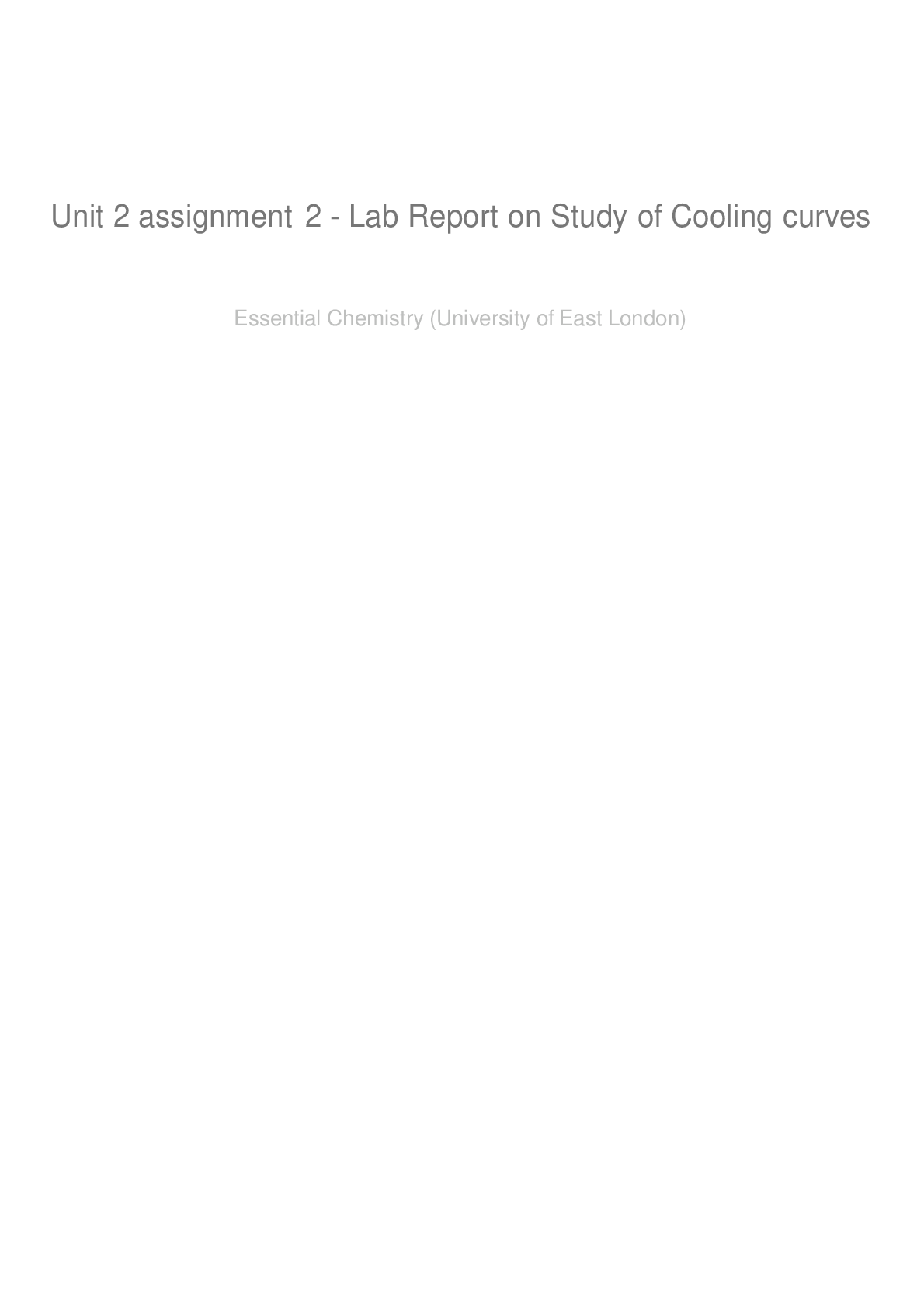
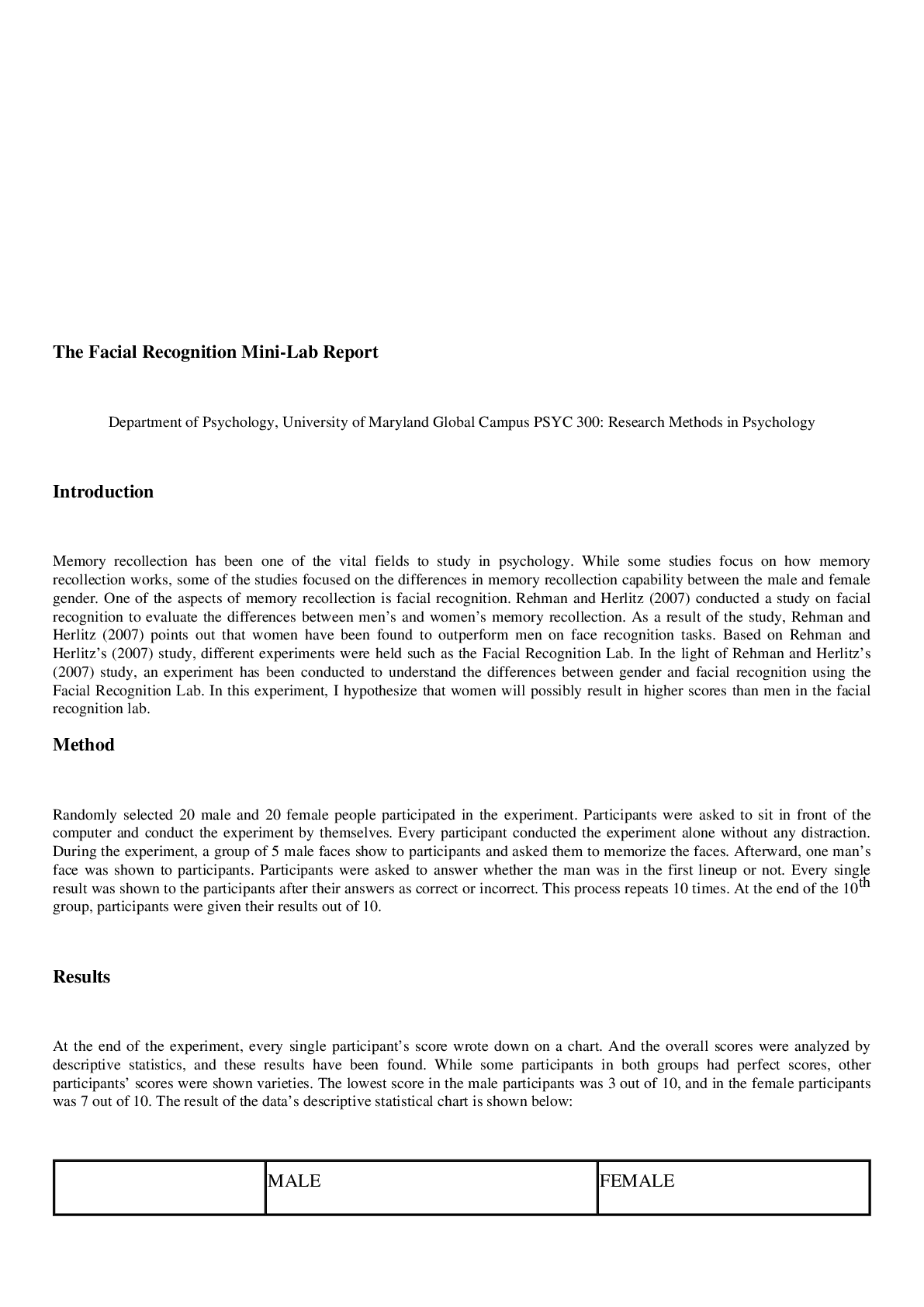
 (1).png)
